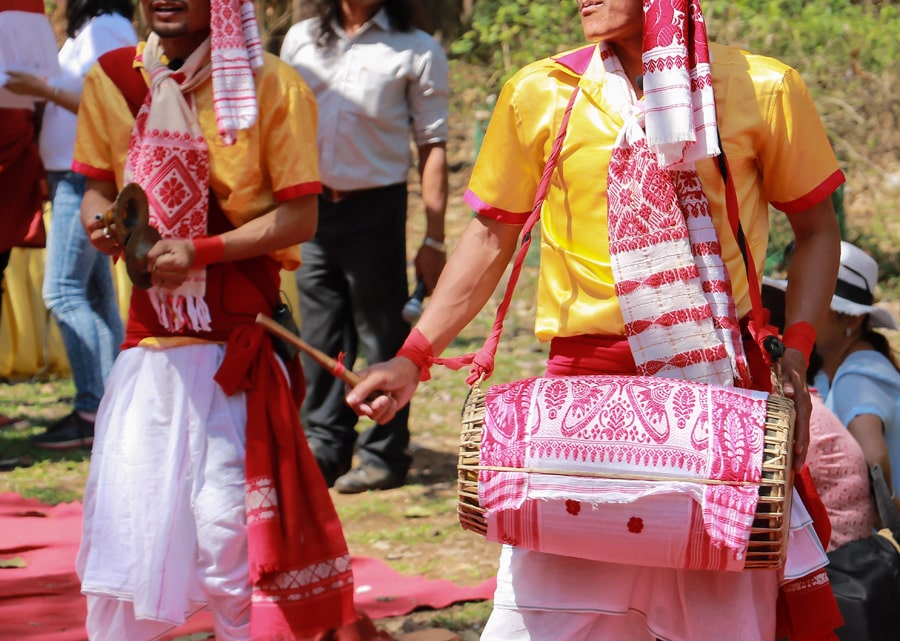
Cultural Practices & Significance of Bohag Bihu in Assam
Every corner of Assam delighted with Bihu songs, Bihu dance, the aroma of ‘pitha’, the color of ‘jetuka’, villages with the green paddy fields, girls and boys wearing mekhala chadar, dhoti, gamusa and enjoying the beautiful spring season- yes, Bohag Bihu in Assam is not just a festival, it is an emotion, our culture, our tradition and our love!
There are three types of Bihu in Assam- Bohag Bihu or Rongali Bihu, Bhogali Bihu or Magh Bihu, Kati Bihu or Kongali Bihu. All of them have their own significance and importance. In this blog, Bohag Bihu will be celebrated cordially!
Significance of Bohag Bihu of Assam
Bohag Bihu or Rogali Bihu is actually a combination of seven Bihu celebrated in seven days in the month of spring. It is the time of harvest when the vegetation of rice in the paddy fields starts, considered as the beginning of Assamese New Year. The trees get new leaves, the cuckoos sing, beautiful flowers blooms and the weather becomes pleasant. The beautiful spring touches everyone’s heart through Bihu.
Bohag Bihu of Assam is a celebration of seven days, namely- Rati Bihu, Sot Bihu, Goru Bihu, Manuh Bihu, Kutum Bihu, Mela Bihu and Sera Bihu. During the Bihu days people offers prayers to the elders in the family and seek blessings. They offer Gamusa as a sign of love and respect, go to each other’s house and perform Husori. In Goru Bihu villagers bring their cattle to ponds and rivers, wash them and apply herbs on their body so that they remain healthy during the year and perform well at the paddy fields. On the day of Manuh Bihu, that is the first day of the Assamese calendar, people get up early, take bath with Maah-Halodhi (turmeric paste and black gram paste), wear new clothes, pray to the God, prepare delicious Bihu feast and enjoy with family. People especially girls apply Jetuka/Henna in hands and perform Bihu dance. There seems an atmosphere of prosperity, joy and happiness all the way.

Bihu dance performed in stage
No festival in Assam is completed without Bihu dance!
That is true. No festival of Assam can be completed without the amazing folk dance of Assam-Bihu Naas. Rongali Bihu too can’t be fulfilled without some dances and songs. Husori has special importance in Rongali Bihu. People, especially young boys and girls in villages go to neighbor’s houses and perform Bihu dance and enjoy with all. Now-a-days as most of the people have been moved to cities and couldn’t manage to perform such Bihu cultures, Bihu is seen to be performed in stages, where people go and watch Bihu functions performed by local artists. Different cultural programs are also seen to be telecasted in tv channels and online platforms. In this way people who are away from home and away from their villages can also enjoy Bihu digitally.
The most awaited Bihu feast
Doi, sira, muri, akhoi, hurum, pitha, laru, luci, bhaji and what not! There is like no ending to eating these Bihu days. Generally on the day of Manuh Bihu family and friends get together and take meals together. The Assamese women get busy in preparing the Bihu delicacies and feed the guests with different items on their visit.
Thus with lots of enjoyment, rejoices and happy hours Bihu comes to an end leaving traces of happiness in everyone’s heart for the rest of the year.
